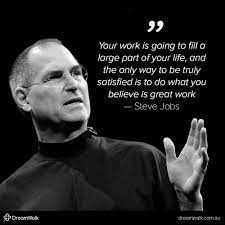
(Credit: Nasscom for startups)
I was talking to a young duo today – they are techies, working on coding a product for the Legal Industry. Product is maybe 60% ready, and they are beginning client conversations seriously.
Ofcourse, they’ve done the checks for attractiveness of the product right from the beginning, with friends and family. They also have a quasi “beta product client” who is using the product and giving feedback. And, they are making all attempts to demo their product to as many folks as possible.
They are an exceptionally honest bunch – they had a couple potential clients who were interested in their initial pitch; but most interested in a particular feature. When asked, “can your product do this now”, they said no, but we can do it in the next version….result – client lost interest as need was “here and now”.
Brings me to the familiar dilemma – how much smoke screening should one do on one’s existing products/ services, to enable client acquisition.
I think most startups work this way – you have an end vision, you create some capabilities, you have belief in what you can do, and the rest you “wing”…
I think in all my time at EmPower (> 8 years) not ONCE did we say NO to a client. We built almost all our services from scratch. With the exception of maybe the first division we started, where atleast we had some rudimentary skills at execution, we knew zilch about the others – we created 2 additional service lines, and then a product/ tech platform because our clients led us that way. But, when asked by the client – “can you do this” – our answer was always, “sure!”. This, by the way, ofcourse the market facing/ bizdev guys said – but invariably the ops teams – who often didn’t have a clue on HOW – backed up the bizdev folks!
The funniest/ goriest example (depending on which side you are) of this strategy was when we were considering starting our “pure play analytics” services. Now these were adjacencies to services we sold, and as we considered growth, almost a no – brainer to branch out into. The clients were common, the need was common, so it was really obvious. Our problem, it did need “specialist” skills – which we didn’t have, and were not necessarily ready to pay for, BEFORE we figured we would get traction.
So, after a fair amount of work, we did get a meeting with a senior analytics chap in an organisation – and, reasonably impressed by our pitch, he threw us a “pilot project” – a problem he was grappling with, that he said – “lemme test you on”.
Good news right? Wrong! We had no idea how to do it! In our usual way, we scrambled to “figure it out” – (by the way, I always feel that an alternative title for “entrepreneur” is “figurer out” – Imagine saying I am Sangita Joshi, Chief Figurer Out at EmPower!). So, we dug out our stats books, went to the net for quick tutorials and got one of our smart analysts to figure it out etc.. but then, someone hit upon the bright idea that since anyway we were looking to hire analytics experts eventually, let us start right now, and give this problem (disguised of course) as the “interview test”. It worked well for a while – we tested and interviewed scores of people and were able to glean a fair amount of knowledge this way. ofcourse, then the bomb burst – we got a call from our client who said – I understand you guys have given my problem out to someone else??? (One of the interviewees belonged to another company who had ALSO been given the same pilot problem, and they told the client). Much grovelling later, we extricated ourselves from the situation. Result – THAT was NOT when we started our analytics division!
But we also have success stories – our Information Support Services Division started again by our telling a client – ‘YES we CAN!” – which was borderline truth only. (The good part in processes is – yes, most people can – it’s not rocket science – the question is – can you do it WELL/ BETTER than others/ with expertise!) We hired, trained, set up and executed a project requiring some 100 people in a matter of 3 weeks – it involved a LOT of midnight oil burning, many palpitations and a fair amount of despair – but that division with the single client ultimately became our first/ biggest engine for scale, our excuse for better facilities, the reason for our acquiring a “second facility” via an outsourced vendor (read older post on this here), and probably an important reason contributing to a successful exit.
Similarly, when our first large client (one of the top five pharma companies in the world) came to us to outsource their entire media monitoring for their 29 brands – we were some 15 people, and had NO idea how we were going to scale to execute. But execute we did, and that client still remains with us.
So, what then is the answer – should one/ should one not smokescreen? At what point do you draw the line? If you are scrupulously honest, do you run the risk of never acquiring a client? But on the other hand, will you ever have a product/ service that can satisfy all clients’ needs?

(Credit: Nasscom for startups)
Lets take a step back – first of all, serial entrepreneurs apart, the minute you decide to go on your own and begin a “start-up”, you are walking on (for you) uncharted territory. From being an expert in your field of specialisation/s, you become a wearer of multiple hats – owner, boss, mentor, coder, program manager, HR specialist, facilities manager, Finance guy, funds raiser, business plan creator, marketer, sales person, motivator. Its highly unlikely that you have done much/ any of this work before. So what makes you take the step? The belief that you can do it, right? You believe in a promise, and have sufficient confidence in your abilities, and your own judgement of your abilities, to know what you can manage/ how much you can stretch/ and, even more importantly, what is outside of the bounds of possible for you! You sell this promise to your recruits/ the angel funder/ VC whatever, and anyone of your friends and family who want to/ need to know, and are interested! Remember, you are the “figurer out”! (reminds me of the famous Beatles song )
…Lend me your ears and I’ll sing you a song,
And I’ll try not to sing out of key.
Oh I get by with a little help from my friends,…..
Mmm, I’m gonna try with a little help from my friends.

Secondly, and this is something I realised after many struggles with my conscience on – OMG, we are telling lies, we are selling fool’s gold to clients, we have NO idea how to do this etc etc…that, business, specially transactions, are ALWAYS done on PROMISE – so, when you buy the Lux soap, you do believe (or want to believe, in the “promise” of film-star-like-beauty). This means, that most clients REALISE that you may NOT have all the answers to their problems – but they invest their confidence/ time/ money in the belief – that YOU will be able to GET them their answers/ “figure them out”. So, its their belief in the PEOPLE, not so much the product or the service. (There, Promise and People – thats the 2 new Ps!)
Thats why, any investor, asks for the TEAM composition first, before even asking for the product description! As they say, “there are no new ideas, only new ways of making the idea work!”
Does this mean you sell all air? No, ofcourse not! You DO have in place your “minimum viable product” or service – this is the core set of capabilities that satisfy the bulk of your vision, and, as per your best knowledge, satisfy the bulk of your client sets’ needs. What defines this MVP? aaah – it depends – and it would be really presumptious on my part to answer that!
But beyond that, ALL business works on versions/ enhancements/ upgrades what have you – now, some lenses may call it smokescreens, but you are allowed your kinder version :). I remember, when the CEO of the company who acquired us was talking to us founders during the due diligence phase, we told him – “we never say no to a client” – he said, “oh, we’re in the same boat then”. The interesting thing was, and this is a 1.6ish bil USD/ 60Kish people company, remember; he said “our clients know we screw up very often – but our clients also know we have the ability to fix it”!
As all advisers to startups say – “its not important to get it perfect; its important to get it done!” Which means, baby steps is the way to go – as long as you TAKE those steps! (See my earlier post on goals and baby steps) Which then translates logically to, are there scenarios when your steps are short of what your client wants? And the answer is – “of course!”. So, should you turn opportunity down? Duh, why on earth would you do that?
As for squaring it with your conscience, even Yudhishtira, the Dharma Raj, “lied” for a cause! It is said that, for that lie, “Ashwathama hatha, narowah kunjarowah” (Ashwathama is dead, I don’t know whether it is man or elephant) which he told his Guru Drona, and the latter half of which was obliterated by Krishna loudly blowing the conch; which also led to Drona giving up the will to fight in the Mahabharata, Yudhishtira was taken past Hell on his way to Heaven!
So, Smoke screen or your version of the truth? What say?

Tags: 2 Ps, ashwathama, beta product, bizdev, client acquisition, dronacharya, entrepreneurship, Fund raising, goal setting, lux beauty, M&A, minimum viable product, Smokescreen, startup, VC, yudhishtir






























